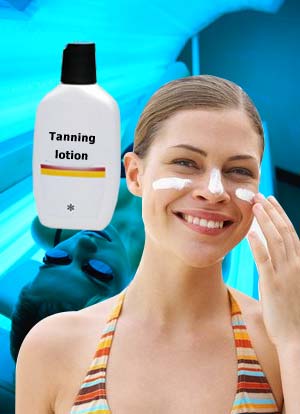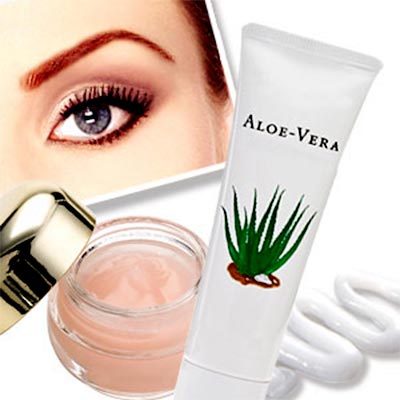Tanning Salon

Tanning salons find many an eager customer wanting to sport a bronzed skin color. It is commonly assumed that indoor sunless tanning comes without the hazards that are normally associated with the sun's UV rays. The FTC cautions consumers against getting taken in by tall claims made by tanning salons. It is essential to understand how tanning beds and tanning products work so that you are aware of the accompanying health hazards. Learn more about spray tanning and tanning lotions.
Tanning salon
Indoor tanning or tanning under the scorching sun comes with its own share of health hazards. You are at a higher risk for developing skin cancer later and also premature wrinkling and ultraviolet induced skin rashes. UVA rays emitted during tanning salon sessions can penetrate into the skin and destroy skin fibers and damage its elasticity.
Excessive exposure is also known to cause tumors. Tanning devices are known to induce light-sensitive skin ailments such as cold sores. Tanning products can be timed to limit the exposure. Ensure that your eyes are protected with safety goggles while using the tanning salon. They must be sterilized after each use to prevent spread of eye infection.
Sunless tanning
Sunless tanning is not recommended for those on antihistamines, tranquilizers and other medications that may cause an outbreak of sunburn, rashes and allergic reactions. If you are being treated for lupus or diabetes, then the condition can be severely aggravated by ultraviolet radiation from indoor tanning products such as tanning beds.
Tanning bed
Most tanning salons use tanning beds for indoor tanning. According to some doctors, tanning beds can cause alteration of the immune system and photo aging as well as non-melanoma skin cancer. Various research studies indicate that people who visited a tanning salon were 21/2 times more likely to develop squamous cell skin cancer and about 11/2 times more likely to develop basal cell skin than those who have not undergone this indoor tanning treatment.
Tanning beds produce long wave UVA rays that don't cause burning like UVB rays but can do considerable long term damage. While it is true that light emitted from tanning products such as tanning beds is about 40% lesser in UVB rays, many consumers are not aware of the possible consequences.
Tanning beds can be controlled to have the right balance between UVA and UVB rays. A customer seeking a tanned color lies on the tanning bed that releases light from above and below the body.
Tanning lotion
You can find many a tanning lotion made by reputed cosmetic companies. Self-tanning products provide your skin with a mild tan. They are not to be confused with sunscreen lotions. Bronzing lotions lend your skin a mild tanned look, sans the harmful effects of the sun. Tanning gels give you a tan that can last for about 3 days. Usually such lotions come equipped with moisturizers. They provide a tanned color due to the presence of water -soluble dyes. They wash off after a wash.
Self-tanning lotions contain dihydroxyacetone (DHA), which is a proven ingredient that has been approved by the FDA. These tanning lotions are not as effective on very fair or dark skins, but work best on medium complexions. You can sport a fashionable sunless tan. But they need frequent application.
Yet another tanning product is tan accelerator. This tanning lotion stimulates the production of melanin on exposure to the sun. However these products are being revoked by the FDA. This is due to the presence of 5- methoxypsoralen, which is known to cause severe sunburn and can be carcinogenic. Tanning pills contain Carotenoid, a chemical similar to Vitamin A. These pills have been banned in the U.S. Tanning pills have been linked with dangerous side effects such as hepatitis and canthaxanthin retinopathy.
Spray tanning
Spray tanning salons use DHA in the form of mist or spray. DHA is a colorless sugar that interacts with the dead cells located in the upper layer of the epidermis. As the sugar interacts with the dead skin cells, a color change occurs. This change usually lasts about five to seven days from the initial application. Spray tanning lasts for about a week and costs in the range of $18 to $30. Airbrush spray tanning is also performed in some tanning salons for a more natural look.
Tans tend to fade off since the skin goes through a regenerative process every 30 - 45 days. The upper epidermal layer is replaced. Since this layer contains the skin pigment, the tan acquired either indoors or outdoors tends to fade away.
Top of the Page: Tanning Salon
Tags:#tanning salon #tanning bed #tanning #sunless tanning #tanning lotion #indoor tanning #tanning product #spray tanning
 Beauty
Beauty Hair Loss Remedy
DIY Lip Care
Peel Off Lip Color
Moroccan Oil Treatment
Dead Sea Black Mud
Nail Polish Pen Set
Eyebrow Shaping
Long Eyelashes
Tanning Salon
Pedicure
Fish Pedicure
Nail Marbling
Nail Polish
Acrylic Nail
Yellow Nails
Hand Creams
Peeling Cuticles
Cosmetic Surgery
Makeup Foundation
Whiten Teeth Naturally
Tooth Whitening
Salon Spa
Skin Care
Aging Gracefully
Facial Hair Removal for Women
Face Mist
Fragrance
Long Lasting Lipstick
Body Art
Manicure Tips
Cellulite Treatment
Mesotherapy
Colored Contact Lens
Crow's Feet
Acupuncture and Weight Loss
Top of the Page: Tanning Salon
Popularity Index: 101,457

